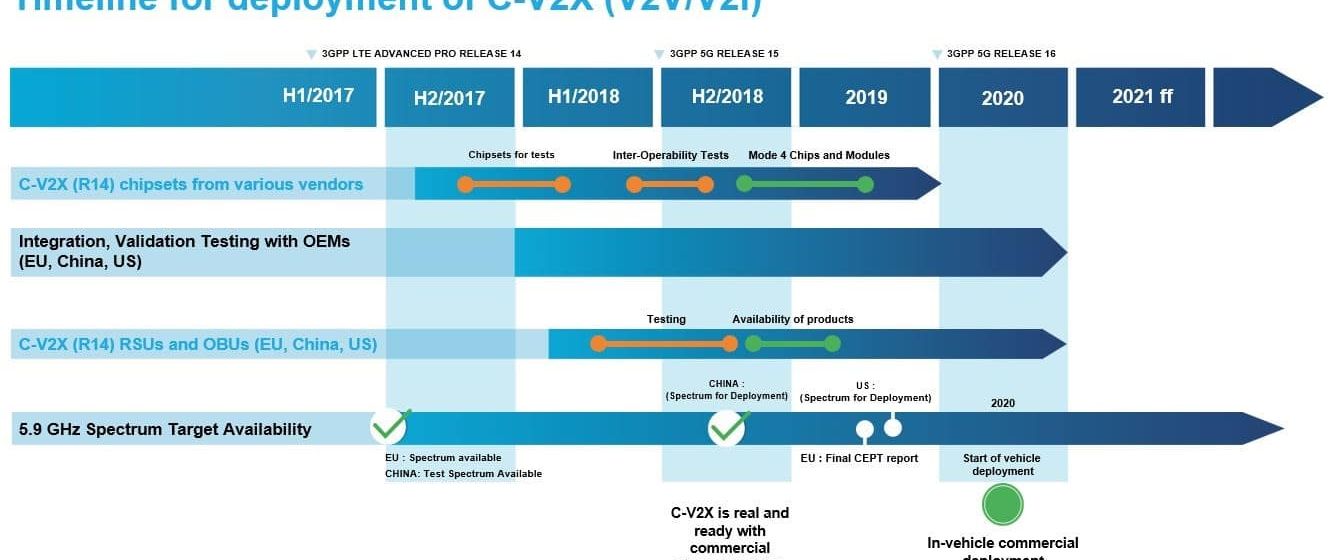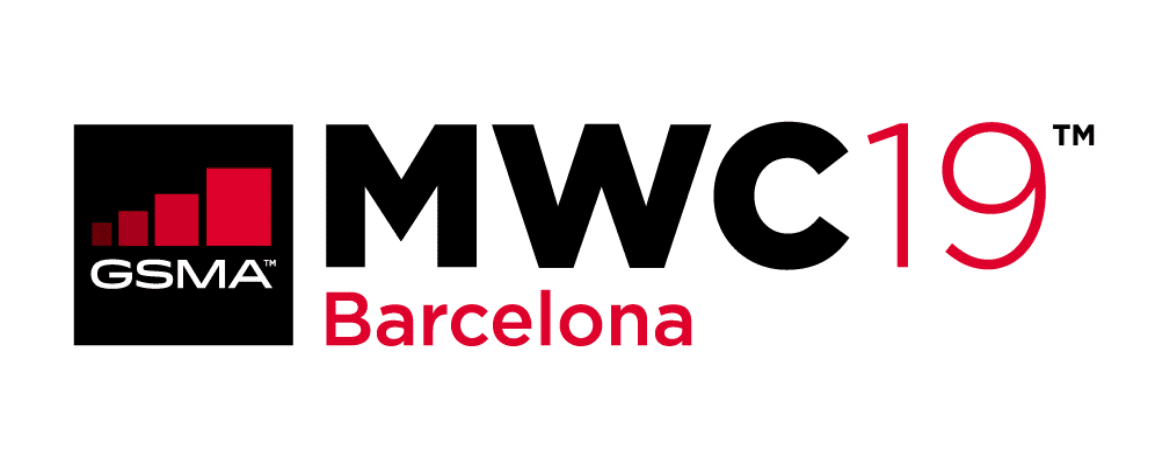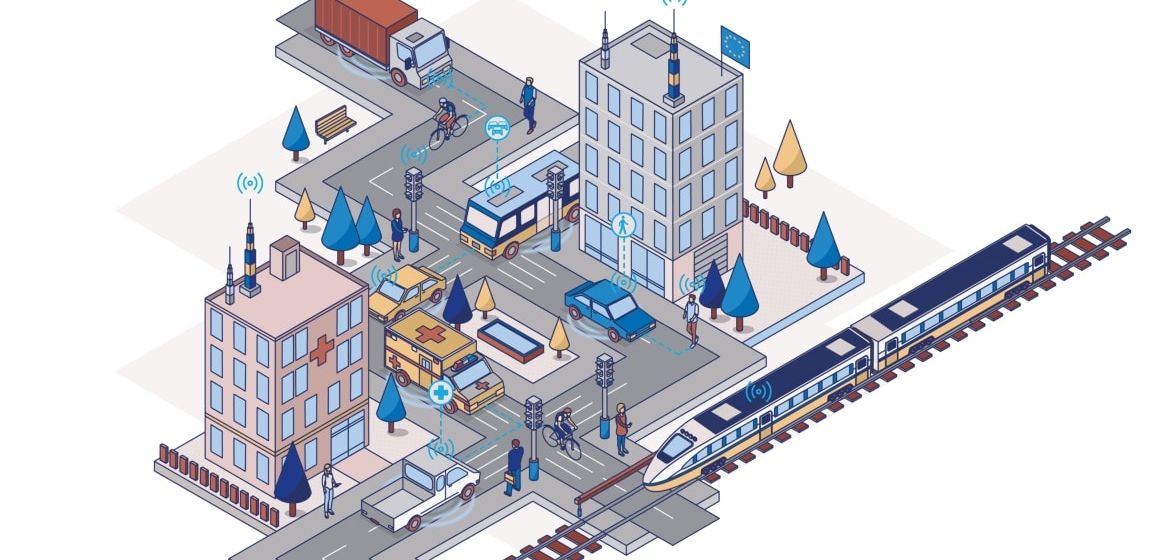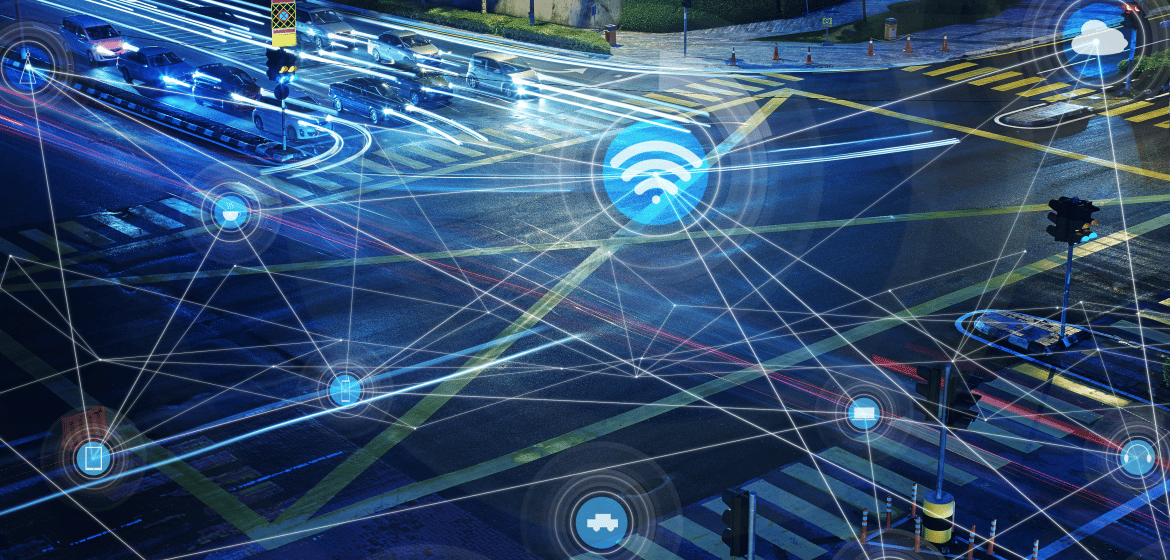
C-V2X contributes to safer roads for everyone: 5GAA live demo event in Berlin
Photos of the workshop can be found here. Click here to see the photos of the live demonstration.
Berlin, 23 May 2019 – Smart mobility technology, which we have been developing over the years, is now a reality. ‘Cellular Vehicle-to-Everything’ (C-V2X) allows vehicles to both communicate with the cloud and also directly with each other and their surroundings. Thanks to 4G LTE cellular technology, as well as the emerging 5G generation of high speed and low latency communications, traffic will be optimized, and emissions will be reduced. Emergency services will navigate smoothly and road safety for everyone, including vulnerable road users, will dramatically enhance.
At a live demo event in Berlin, the 5G Automotive Association (5GAA) presented a deep-dive into a smarter and safer mobility, giving a sneak peek of the technologies ready to be deployed. Prominent 5GAA members including BMW Group, Daimler, Deutsche Telekom, Fraunhofer Institutes FOKUS and ESK, Ford, Huawei, Jaguar Land Rover, Nokia, Qualcomm and Vodafone, demonstrated C-V2X Vehicle-to-Vehicle (V2V), Vehicle-to-Infrastructure (V2I) and Vehicle-to-Network (V2N) applications.
“Connected mobility standards are no longer a vision for the future,” says Maxime Flament, Chief Technology Officer at 5GAA. “The solutions on show are ready to be deployed today and have huge industry momentum based on the forthcoming 5G capabilities. C-V2X technology is a key foundation for a safe and sound driving environment for pedestrians, bicyclists, motorcyclists, cars and commercial heavy trucks. Global field testing is already in its very final stages and the first solutions are now commercially available from multiple suppliers.”
Using both direct short-range communications and mobile networks offers complementary capabilities as showcased in the demos, which involve tele-operated driving and the provision of emergency traffic information between vehicles using multi-access edge computing (MEC) functionality. All the demos use technology that is ready to be deployed.
A short summary on the 5GAA C-V2X use cases, showcased today at Berlin:
1. A. Traffic Management Solutions: Signal Phase and Timing (SPaT) and Red-Light Violation Warning (RLVW) to Vehicle
Waiting at the red light is not only time consuming, but idling, braking and accelerating release more pollutants. The communication between the traffic signal and vehicle is important to improve traffic flow, thus increasing road safety by preventing accidents. During the demo drive, a BMW Group vehicle equipped with a Qualcomm onboard unit running the Savari ITS software stack and the V2X use cases, communicates with a SWARCO traffic signal, showing C-V2X readiness across multiple vendors.
The use case enables the driver to monitor the upcoming traffic light. The center display of the vehicle shows the current signal phase and how long it will remain. In the Red Light Violation Warning (RLVW) use case, the application in the vehicle uses its speed and acceleration profile, along with the signal timing and geometry information from the traffic signal. If the driver is likely to run a red light he/she receives a warning in the vehicle.
B. Traffic Management Solutions: Emergency Electronic Brake light (EEBL)/ Roadworks warning (RWW)
C-V2X provides the driver with information so that he or she can adapt to the upcoming traffic situation in advance. Fraunhofer FOKUS, supported by Daimler, demonstrate an Emergency Electronic Brake Light Warning: Two vehicles equipped with Huawei onboard units are accelerating, and the car ahead brakes hard. The second car instantly receives a warning, demonstrating the advantage of the low-latency C-V2X communication. Furthermore, a Huawei roadside unit communicates ongoing roadwork via C-V2X to the vehicle. Visitors experience both use cases in the car viewing the warnings on the central display.
2. Real Time Emergency Alerts: Vehicle-to-Network and Network-to-Vehicle services
Vodafone Germany and Ford show connected vehicle technology (V2X) that could alert drivers to an accident ahead, moments after it has happened (via eCall Plus). Furthermore, the system provides early warning that emergency vehicles are approaching – and which side of the road other vehicles should move towards to avoid being an obstruction. Experts believe that survival rates for road accident victims can be improved by as much as 40% if they receive treatment just four minutes more quickly.
3. Live data capture and transmission: Expanded network/Vehicle-to-Network capacities via MEC
An ultra-fast, reliable and precise dissemination of safety-relevant information can save lives. Continental, Deutsche Telekom, Fraunhofer ESK and Nokia demonstrate how information is delivered to vehicles almost real-time via a mobile network, utilizing Multi-Access Edge Computing (MEC) technology. All data is processed at the edge of the mobile network to reduce transmission time (latency). As a result, event-related data such as emergency warnings as well as high-definition map data are transmitted in milliseconds, improving driving safety on the path to fully automated driving.
4. Combined Network and Direct solution enables the pinnacle of C-V2X technology
Vodafone Group, Huawei and Jaguar Land Rover demonstrate safety critical use cases by combining different communication modes (short direct via PC5 and longer-range network-based via Uu). The provision of a two-stage warning enables vehicles to be made aware of other vehicles approaching the same junction much earlier and allowing action to taken sooner to avoid a crash. Also, the number of road accidents because of unsafe lane changes and blind spots are significant. Using C-V2X technology helps automotive OEMs keeping the cost of implementing such warnings down by not having to install additional ‘one-off’ radio access systems for such warnings. The demos showcased the value and readiness of C-V2X and its ability to seamlessly combine both long range and short-range direct and longer-range network communication links. Specifically, it was shown that at a T-junction – a key site for accidents – connected cars benefit from longer range cellular network communication to deliver safety-related information beyond what alone can be delivered from short-range technology.
5. Remote-operated driving
Remote-Operated Driving (ROD) smooths the path to automated vehicles, anticipating situations in which remote human operator can intervene with the driving of the vehicle. ROD is enabled by low latency communication equipment e.g. by Huawei to deliver instructions or inputs to the vehicle to help it navigate challenging scenarios. Fraunhofer Institute FOKUS, supported by Daimler, showcase the reliability ROD enables already today.
_______________
Contact
Marketing and Communications Team
Email: marcom@5gaa.org

5GAA will discuss connected mobility through C-V2X at Mobile World Congress Shanghai 2019
MWC Shanghai 2019 is where tech industry innovators and influences will gather to explore how intelligent connectivity will shape the future of our digital experiences, our industry, and our world.
This time again, the 5G Automotive Association (5GAA) will lead the field of connected mobility by participating in GSMA’s major Chinese congress. On Thursday 27 June 2019, 5GAA will host a morning session with leading automotive and telecommunications companies worldwide, highlighting the readiness of the automotive and telecoms industries as to the deployment of the Cellular-Vehicle-To-Everything (C-V2X) technology.
Following its participation at MWC Shanghai 2018, 5GAA is proud to continue the facilitation of such thought leadership platforms for relevant stakeholders, driving towards building a better mobility ecosystem.
Join us on Thursday 27 June 2019 from 09:00 to 13:00 at the Kerry Hotel Pudong (Ballroom 5-7 on Level 3).
More information on the event page here.
Any question? Please contact marcom@5gaa.org.

5GAA promotes C-V2X technology safety and commercial readiness at SAE World Congress Experience
DETROIT, 11 April 2019 – The 5G Automotive Association highlighted both the safety and commercial readiness of the ‘Cellular Vehicle-to-Everything’ (C-V2X) communication technology during two learning labs sessions and one round-table at SAE World Congress Experience. As a celebration of the recent MoU signature with the OmniAir testing consortium, WCX participants also had the opportunity to discover the testing equipment that enables C-V2X interoperability at the 5GAA networking lounge.
‘Cellular Vehicle-to-Everything’ (C-V2X) technology is synonymous with safety, and is ready to be commercially deployed. These were the main messages from the 5G Automotive Association (5GAA) at SAE World Congress, which took place 9-11 April 2019 in Detroit (US).
5GAA representatives from member companies Ford and Panasonic animated two sessions, highlighting the unique benefits of the technology for improving road safety, traffic efficiency. They explained C-V2X role as a key enabler for supporting automated driving whilst strongly emphasizing its technological maturity and commercial readiness.
C-V2X readiness was also reinforced at the 5GAA roundtable on ‘Cloud and Car Enabled Digital Services’, moderated by 5GAA Board member Jim Misener, Senior Director and Global C-V2X Ecosystem Lead at Qualcomm. “C-V2X is all about connecting vehicles with information that is essential for increasing safety and improving traffic flow. Basic safety and advanced driving services communicate between devices with other vehicles, pedestrians and roadside, while many other data exchange and services are supported by the cloud and edge infrastructure using the 4G/5G cellular data network. This is the right combination that will trigger viable investments” said 5GAA CTO Maxime Flament, who took part in the debate.
During the congress, numerous 5GAA representatives gathered at the association’s networking lounge to meet with the CTO to exchange views on the key takeaways generated during the panel sessions. The recent MoU signature with the OmniAir testing consortium, a leading industry association promoting interoperability and certification for connected vehicles, was also celebrated.
C-V2X interoperability Tests – Simultaneously Showcasing in the US and Testing in Europe
5GAA showcased the Rohde & Schwarz C-V2X Testing Equipment at its networking lounge during the SAE World Congress. While participants in Detroit could get a glimpse on how this equipment works; the first 5GAA Plugfest – a multi-vendor interoperability testing event – was taking place using the same equipment in Germany.
The interoperability event took place on the testing grounds of 5GAA Member DEKRA in Klettwitz (Germany) and involved several different C-V2X technology vendors including Cohda Wireless, Commsignia, Samsung Harman, Huawei, Neusoft, Qualcomm, Savari, and Vodafone Automotive. Keysight testing equipment was also used in the tests.
Overall, the test provided valuable insights into the maturity and market readiness of C-V2X technology, as interoperability between devices is the key to unlocking the benefits of Connected Vehicles. It also demonstrated the common high-degree of maturity and convergence amongst the technology vendors delivering C-V2X Communications. This test event, along with the IMT-2020 event in Shanghai in November 2018, is part of the final stages of 5GAA’s pre-deployment activities. This underscores the current maturity of cellular-based LTE-V2X, which will soon be available to drivers worldwide given the right regulatory environment and market conditions. 5GAA member Ford’s recent announcement about their plans for in-vehicle C-V2X deployment both in China and the US is just one testament to this fact.
With this week’s activities in the US and Germany, 5GAA continues promoting C-V2X as a future proof technology that allows faster, and more accurate and reliable communications.
About 5GAA
The 5G Automotive Association (5GAA) is a global, cross-industry organisation with 110 members working together to develop end-to-end solutions for future mobility and transportation services. The organisation is committed to helping define and develop the next generation of connected mobility for advanced driving and automated vehicle solutions.
For more information, visit 5GAA’s website, LinkedIn and Twitter pages.
Contact
Marketing and Communications Team
Email: marcom@5gaa.org

5GAA board submits feedback on the C-ITS delegated regulation proposed by the European Commission
The 5G Automotive Association (5GAA) board took part in the public consultation launched by the Directorate General Directorate-General for Mobility and Transport (DG MOVE) of the European Commission on the C-ITS delegated regulation.
The consultation has 100 comments from individuals, associations and companies. In fact, some 5GAA members have submitted their own feedback. The variety of comments proves that there are clearly opposing positions regarding this regulation.
Concretely, in the submitted feedback, the 5GAA board calls upon the Commission to:
- Amend the draft Delegated Regulation to include LTE-V2X both short-range and long-range communications, via the related ETSI approved specifications and profiles on an equal footing with ITS-G5;
- Define interoperability as a “mutual” requirement among mature C-ITS technologies, namely ITS-G5 and LTE-V2X for short & long-range communications;
- Avoid legal uncertainty on the “fast-track” update process by:
– Introducing a 6-month deadline for the Commission to make its decision publicly known as regards the initiation of an amendment procedure to include new technologies (e.g., 5G-V2X) or new C-ITS services;
– Specifying clearly the terms, conditions and processes for the inclusion of other technologies (e.g. 5G-V2X) or C-ITS services, including unambiguous definitions of terms such as “existing”, “maturity” or “migration path”, etc.;
– Include as an Annex to the Delegated Regulation a template for the “technical file” to be submitted;
– Open up participation in the future C-ITS Expert Group to representatives of technology segments that are not within the scope of the draft Delegated Regulation today. - We note that all elements required in the proposed process for updating the draft Regulation are already met by LTE-V2X:
– All required profiles/technical specifications for LTE-V2X have been adopted by European SDOs;
– Multiple vendors have already commercialised LTE-V2X short-range hardware and software solutions in Q1 2019 (and more are announced for Q2 2019); - We also underline that many of the C-ITS priority services listed in Annex I of the draft Delegated Regulation have already been implemented using 3G and 4G (LTE) cellular networks for long-range communications (e.g. traffic jams, weather conditions, road works, etc.). Yet, this reality is not accounted for by the draft text which still only foresees the initial deployment of these services exclusively via ITS-G5 for short-range communications.
Read the full feedback submitted by the 5GAA board here.

5GAA releases updated white paper on C-V2X Deployment Timeline
In December 2017 5GAA published the white paper “Timeline for deployment of LTE-V2X (V2V/V2I)” focusing on the introduction of direct communications with LTE 3GPP Rel.14. Since then Cellular-V2X (C-V2X) has gained a lot of momentum in the eco-system and we are at the verge of deploying the next generation of mobile network technology – 5G.
This updated timeline of the introduction of C-V2X covers the following topics:
- The extended use of V2N for safety-oriented services in vehicles deployed on the roads
- The comprehensive test and evaluation activities undertaken by the ecosystem consisting of OEMs, tier-1s, chip vendors, road operators, mobile operators as well as their suppliers and test equipment providers
- Outlook on the evolution towards 5G including backward compatibility
- C-V2X use cases for railways and respective test activities
- Progress on regulatory aspects
The inclusion of 2G, 3G and 4G cellular communication technologies (V2N – Vehicle2Network) into vehicles (i.e. “Connected Cars”) has been extremely successful in delivering benefits for the vehicle, the driver, the automaker and other participants in the transportation and emergency services ecosystem.
At present, more than 100 million Vehicles connected to cellular networks (V2N) are on the roads. This V2N connection is used for a wide variety of services including telematics, connected infotainment, real time navigation and traffic optimization, as well as for safety services including automatic crash notification (ACN) such as eCall, the recognition of slow or stationary vehicle(s) and informational alerts for events including traffic jams, road works and other traffic infrastructure related information, inclement weather conditions and other hazardous conditions. Several OEMs[i] share safety related warnings between their vehicles and have started to exchange this information across OEMs using e.g. services from HERE Technologies. Other initiatives to share information by interconnected backend systems are the EU financed projects ‘Nordic Way’, Talking Traffic’ and the ‘Drive Sweden projects. These projects also interconnect Road Traffic Authorities, Road operators, OEMs and smartphone applications to share traffic related info. The current understanding, also based on the European C-ITS Platform Final Report, is that the nature of these warning messages is informational, and the driver is always responsible.
C-V2X is a recent term introduced for cellular technologies optimized for transportation and connected vehicles. In particular, the C refers to both 4G LTE and 5G NR (new radio) releases of specifications, whereas X refers to multiple things’ vehicles may connect with. C-V2X includes both network-based communications that have been in use for decades, such as vehicle-to-network (V2N), as well as a new complementary mode of operation first defined in the 3GPP Release 14 specifications and approved in June 2017, which allows direct communications between vehicles (V2V), as well as between vehicle and road side infrastructure (V2I and I2V) without requiring any cellular network coverage or subscription. It can further support vulnerable road users (e.g. vehicle to pedestrian, or V2P) by integrating the direct communications technology into mobile and other devices. The direct communications functionality is used to specifically support safety critical services to reduce collisions, support automated driving, and improve traffic efficiency. LTE-V2X is the 3GPP nomenclature for direct communications as specified in releases 14 and 15, whereas 5G NR-V2X is from Release 16 onward. 3GPP R14 also added network communications improvements, delivering increased data volumes, managing greater scale of connected devices, and can further reduce latency and provide for higher levels of reliability in V2N. V2N is also technically known as Uu and refers to an endpoint such as a vehicle communicating with network infrastructure over operator licensed spectrum, whereas V2V/V2I/V2P is supported by direct communications operating on the ITS spectrum (e.g. 5.9GHz) and is known technically as PC5.
Click here to read the full version of this updated White Paper.
[i] https://www.autoblog.com/2018/05/07/volvo-cars-volvo-trucks-share-data/?guccounter=1#slide-7324246

5GAA at MWC Barcelona 2019
MWC Barcelona 2019 is where over 100,000 of the tech industry’s innovators and influences will gather to explore how Intelligent Connectivity will shape the future of our digital experiences, our industry, and our world.
This time again, the 5G Automotive Association (5GAA) will lead the field of connected mobility by participating in the Congress. On Wednesday 27 February 2019 the association will host a morning session with leading automotive and telecommunications companies Worldwide. This a great opportunity to get updates and important insights from key industry players.
Following its participation at MWC Barcelona 2018, 5GAA is proud to continue the facilitation of such thought leadership platforms for relevant stakeholders, driving towards building a better mobility ecosystem.
Join us on Wednesday 27 February 2019 from 09:00 to 13:00 in Hall 8.0 Theatre F.
Learn more: www.mwcbarcelona.com
For more information, please contact marcom@5gaa.org

5GAA to attend CES 2019 as Allied Association Partner
The 5G Automotive Association (5GAA) is delighted to announce its participation in CES 2019 on 8-11 January in Las Vegas as an official partner. The association will have a dedicated stand in the Allied Association Lounge.
CTO Maxime Flament along with 5GAA staff members will be present at the Lounge to meet with key mobility stakeholders and showcase 5GAA’s latest activities and progress. 5GAA will be also be represented through Member Qualcomm, Jason Ellis, during a session discussing “Wireless: DSRC/5G, Bluetooth, Wifi”. The session takes place on Tuesday 8 January from 1:00 – 2:00 PM. More information here.
CES is the world’s gathering place for all who thrive on the business of consumer technologies. Each year the show attracts more than 180,000 individuals from over 150 countries, representing the entire technology ecosystem. More than 6,500 members of the world’s media and over 65,000 senior-level executives attend.
In addition to the list of impressive high-level plenary attendees, the event gathering more than 250 sessions covers a wide range of topics including key trends and emerging technologies.
Follow us on Twitter and Linkedin to stay up-to-date with our last news about the event.

Europe’s leadership in connected and automated driving depends on technology-neutral, innovation-oriented policies
Dear Minister,
Serious concern has arisen in the telecoms and transport industries over the restrictive content of the forthcoming Delegated Act on Cooperative Intelligent Transport Systems (C-ITS). Although it is close to completion, the text still does not lay down the technology-neutral framework urged by the CEOs of 24 members of our associations (signatories included BMW, Daimler, Deutsche Telekom, Ericsson, Ford, Groupe PSA, Nokia, Telefonica and Vodafone) in their letter to President Juncker in July 2018[1].
Despite a welcome acknowledgement of cellular technologies, the draft Delegated Act only contemplates the Cellular Vehicle-to-Everything (C-V2X) technology family in the framework of a future revision of the Act in up to three years’ time, with no guarantee to date that a level playing field will be ensured with respect to compatibility and interoperability requirements.
The current draft effectively endorses Wi-Fi based communication (known as “ITS-G5”) as the baseline technology for connected cars in the EU, at the expense of a mature and standardised alternative[1]: LTE-V2X (which is the current realisation of C-V2X). We believe this contradicts the principle of technology neutrality and will prove to be a very costly missed opportunity for Europe.
Indeed, LTE-V2X is regarded internationally as the foundation stone which will pave the way towards the most advanced safety services enabled by 5G, in particular for vulnerable road users. Only C-V2X offers such a clear evolutionary roadmap starting with LTE-V2X today and evolving into 5G-V2X tomorrow, making it the only future-proof technology.
A decision exclusively favouring Wi-Fi technology today should thus be carefully considered. It would bear negative long-term consequences for Europe, since Wi-Fi offers no prospect of compatibility with 5G. A costly migration path would be required, resulting in significant sunk costs. It would stall C-V2X roll-out and investments in 5G for automotive and alongside the road network would be adversely affected.
LTE-V2X must be allowed to succeed as the first building block en route to the full realisation of 5G potential, ensuring the competitiveness of key industry verticals such as automotive as well as the telecom sector. A wrong decision at this critical juncture would put in jeopardy Europe’s leadership and investment in 5G.
Connected vehicle and roadside infrastructure technology is evolving at a very fast pace. LTE-V2X field tests and deployment projects are under way in many EU countries as well as globally with the first market introductions foreseen in 2019, within the same timeframe as the Delegated Act publication.
Leveraging all the previous work from European standardisation organisations, C-V2X offers unique benefits as a single technology platform, combining both direct short-range (not requiring network coverage or a subscription) and long-range modes.
It will, unhindered, significantly improve road safety in Europe through direct vehicle-to-vehicle, vehicle-to-infrastructure and, vehicle-to-network communication, but also provide new vehicle-to-pedestrian applications owing to its unique smartphone integration capacity, thereby reducing vulnerable road users’ casualties (43% of EU road fatalities in 2017)[1].
C-V2X also provides the fastest way to reach large-scale penetration of C-ITS: all new vehicles are expected to feature embedded cellular connectivity by 2021-2022. Many OEMs have already deployed some Day 1 C-ITS services using existing 3G/4G networks and LTE-V2X long-range mode.
We strongly believe that Europe should capitalise on these early deployments and would gain substantial economic benefits by maximising the synergies between transport and telecom network infrastructures. Today, LTE network population coverage averages 97.9% in Europe (89.9% of rural EU households) with a rapid year-on-year increase[2], whereas ITS-G5 deployment has not yet begun.
In addition, consumer 5G is rapidly moving from trials to early commercialisation. Between 2018 and 2020, 48 countries will launch 5G mobile services across North America, Europe, the Middle East and Asia-Pacific.[3]
This is not about promoting individual companies that are about to launch their respective products. It is about creating the right framework which will support Europe to make the best technology choices in the future, to achieve our common objective: making the roads safer for all.
We encourage you to support a truly technology neutral approach to C-ITS through a Delegated Act inclusive of LTE-V2X, as it holds the promise of better safety. C-V2X is close to deployment in every world region as our entire ecosystem has stepped up its efforts to be market-ready in the upcoming months. However, it is absolutely critical for our industries that the EU regulatory framework provides sufficient legal certainty in order to pursue and accelerate current roll-out plans for C-V2X.
Afke Schaart Johannes Springer Lise Fuhr
VP and Head of Europe, Director General, 5GAA Director General, ETNO
Russia and CIS, GSMA
[1] CEO Letter to President Juncker on connected car legislation
[2] Cf. Annex to this document
[3] Road Safety in the EU – Trends, statistics and main challenges
[4] Broadband Coverage in Europe 2017, European Commission
[5] GSMA intelligence

Connected car technology: Cellular V2X outperforms DSRC/ITS-G5 in comprehensive tests as mobility industry moves towards 5G
Munich, 9 November 2018: As regulators worldwide are looking into future rules for connected cars technologies, the 5G Automotive Association has conducted tests to compare the performance of 802.11p/DSRC (known in Europe as ITS-G5) and Cellular V2X PC5 radio technologies in delivering V2V (Vehicle-To-Vehicle) safety messages.
The test results show that Cellular Vehicle-to-everything (C-V2X) direct communications technology, consistently – and in many cases overwhelmingly – outperforms 802.11p/DSRC. With a natural evolution path towards the low latency and high bandwidth benefits of 5G NR, C-V2X also demonstrated superior performance in several dimensions, including the following:
- Enhanced reliability over extended communications range;
- Better non-line-of-sight performance; and
- Greater resiliency to interference (e.g. arising from other devices)
These performance advantages are particularly important in the most difficult environments such as non-line-of-sight scenarios (e.g., around a corner, highway queue forming etc.), where resident onboard sensors and radars have certain limitations.
Reliable and timely radio performance is a crucial requirement that all those with a stake in transport safety depend on to deliver critical safety applications. Such test procedures are a prerequisite to comparing the available radio technologies, and the results are very clear: C-V2X direct communications (PC5) performs better. C-V2X is commercially available and reuses the decades’ long investment into protocols and upper layer applications to improve safety, deliver traffic efficiency, and support automated driving.
The design and execution of each experiment were set up to ensure that environmental conditions, radio frequency parameters, system integration details, and physical structures were consistent when comparing 802.11p/DSRC and C-V2X direct communications.
As yet another strong signal about the global momentum behind C-V2X, 5GAA today counts 102 members (40% from Europe, 35% Asia-Pacific and 25% Americas), an increase of 60% since January 2018, quite a movement for a 2-year-old organization.
5GAA brings together the automotive and ICT industry leaders from all world regions among which carmakers, Tier-1 suppliers, mobile network operators, chipset manufacturers, test equipment vendors, telecom suppliers, and traffic signal suppliers in order to continue C-V2X field tests and to accelerate in-vehicle and infrastructure commercial deployments, foreseen beginning in 2019 globally.
Maxime Flament, CTO of the 5G Automotive Association (5GAA) said “these test results demonstrate that C-V2X direct communications, is today’s most cutting-edge technology for connected and automated driving, and the best to finally deliver upon safety and traffic efficiency. Hence why C-V2X ecosystem is growing so rapidly – the 5G Automotive Association has now more than 100 members who all believe in C-V2X as the future of mobility.”
Read the full report here
See the full webinar here
Notes to Editors:
The V2V radio performance tests were conducted by 5GAA members over a period spanning six months from March through September 2018.
Vehicle-to-Everything (V2X) communication is an essential enabler of cooperative, connected and automated mobility that can be supported today by two concurrent technologies: 802.11p (Wi-Fi based) and Cellular V2X (C-V2X).
C-V2X is the family of cellular technologies designed for automotive applications, standardized by 3GPP, the global telecommunications standard development organization.
C-V2X combines on a single technology platform a direct short-range mode operating over ITS spectrum (not requiring any network coverage or subscription) and a long-range mode using traditional cellular networks operating over the mobile network operator licensed spectrum.
The above-mentioned tests were conducted using only the C-V2X direct short-range communication mode without any network involvement.
C-V2X current realization is based on LTE-V2X (3GPP Release 14, completed in March 2017), and will evolve into 5G-V2X (also called 5G New Radio or “5G NR”) to deliver additional capabilities and support new services (as Release 16, to be completed by 3GPP by end 2019).
About 5GAA
The 5G Automotive Association (5GAA) is a global cross-industry organization of companies from the automotive, technology and telecommunications industries (ICT), working together to develop end-to-end solutions for future mobility and transportation services. Created in 2016, the Association is comprised of over 100 members whose mission is to develop, test and promote communications solutions, initiate their standardization and accelerate their commercial availability and global market penetration, to address society’s connected mobility and road safety needs with applications such as automated driving, ubiquitous access to services and integration into smart city and intelligent transportation.
Media Contact:
Marketing and Communications Team
Email: marcom@5gaa.org

5GAA Report shows superior performance of Cellular V2X vs DSRC
The 5G Automotive Association (5GAA) announces the publication of a tests and results report comparing DSRC and Cellular V2X (C-V2X) radio technologies for their suitability to deliver broadcast V2V (Vehicle-To-Everything) safety messages.
The main conclusion of the report confirms that C-V2X significantly outperformed DSRC in various key areas.
Reliable and timely radio performance is a crucial requirement that the transportation safety stakeholder community, including vehicle manufacturers, road infrastructure owner-operators, standardization bodies and regulators depend on to deliver critical safety applications.
The V2V radio performance tests were conducted over a period spanning six months from March through September 2018. The test results reported here are intended to provide this community with an informed basis for making important decisions on the choice of the air interface to deliver standardized messages (e.g., Basic Safety Message or BSM). Therefore, great care was taken in the design, setup and execution of each experiment to ensure that environmental conditions (weather, time of day, temperature), RF parameters (antennas, power, cables), system integration details, and physical setup (track, obstructions, antenna placement) were consistent when comparing DSRC and C-V2X.


